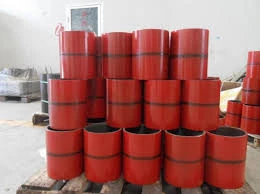- Afrikaans
- Albanian
- Amharic
- Arabic
- Armenian
- Azerbaijani
- Basque
- Belarusian
- Bengali
- Bosnian
- Bulgarian
- Catalan
- Cebuano
- Corsican
- Croatian
- Czech
- Danish
- Dutch
- English
- Esperanto
- Estonian
- Finnish
- French
- Frisian
- Galician
- Georgian
- German
- Greek
- Gujarati
- Haitian Creole
- hausa
- hawaiian
- Hebrew
- Hindi
- Miao
- Hungarian
- Icelandic
- igbo
- Indonesian
- irish
- Italian
- Japanese
- Javanese
- Kannada
- kazakh
- Khmer
- Rwandese
- Korean
- Kurdish
- Kyrgyz
- Lao
- Latin
- Latvian
- Lithuanian
- Luxembourgish
- Macedonian
- Malgashi
- Malay
- Malayalam
- Maltese
- Maori
- Marathi
- Mongolian
- Myanmar
- Nepali
- Norwegian
- Norwegian
- Occitan
- Pashto
- Persian
- Polish
- Portuguese
- Punjabi
- Romanian
- Russian
- Samoan
- Scottish Gaelic
- Serbian
- Sesotho
- Shona
- Sindhi
- Sinhala
- Slovak
- Slovenian
- Somali
- Spanish
- Sundanese
- Swahili
- Swedish
- Tagalog
- Tajik
- Tamil
- Tatar
- Telugu
- Thai
- Turkish
- Turkmen
- Ukrainian
- Urdu
- Uighur
- Uzbek
- Vietnamese
- Welsh
- Bantu
- Yiddish
- Yoruba
- Zulu
Tubing and Casing Specifications Chart for API Standards in Oil and Gas Industry
The API (American Petroleum Institute) tubing and casing chart is an essential tool in the field of oil and gas drilling. It provides standardized information regarding the dimensions, weights, and specifications of various sizes of tubing and casing used in drilling operations. Understanding this chart is crucial for engineers, drillers, and operators in order to ensure the structural integrity of wells, optimize production, and enhance safety.
At the core of the API tubing and casing chart are the specifications for different types of casing and tubing. Casing is a series of steel pipes that are used to line the borehole after drilling. It serves to support the well structure and protect the well from the influx of groundwater, which could lead to contamination. Tubing, on the other hand, is the pipe through which oil or gas is produced to the surface. It is critical for maintaining pressure and controlling the flow of hydrocarbons.
.
The chart includes information such as the nominal pipe size, the wall thickness, and the weight per unit length for each size of tubing and casing. For instance, common sizes for casing include 4.5-inch, 5.5-inch, and 7-inch diameters, while tubing can range from 1.5-inch to 5.5-inch diameters. The wall thickness is a particularly critical aspect, as it directly influences the pipe's strength and ability to withstand various pressures encountered during drilling and production.
api tubing and casing chart

Also included in the API tubing and casing chart is the classification of steel grades. Steel used for casing and tubing is categorized into several grades, such as J55, K55, L80, and P110. Each grade has specific mechanical properties that suit different environments and applications. For instance, higher-grade steels are used in high-pressure and high-temperature conditions, providing the strength required to handle such demanding environments.
Another crucial factor addressed by the API tubing and casing chart is the connection type. The strength and reliability of connections, such as threaded and welded joints, are essential for the overall integrity of the well. The chart provides guidance on the appropriate connection methods for different types of tubing and casing, ensuring that they can withstand operational stresses without failure.
Moreover, environmental considerations play a significant role in the choice of casing and tubing. The chart offers insights on the best materials to use in corrosive environments where sulfur or other damaging elements may be present. By selecting the appropriate grade and material, operators can prolong the lifespan of the well and reduce maintenance costs.
In summary, the API tubing and casing chart serves as a critical resource in the oil and gas industry. It not only provides essential technical specifications but also fosters standardization and safety across various drilling operations. Understanding and correctly utilizing this chart can greatly enhance the efficiency, safety, and profitability of oil and gas extraction activities. As the energy sector continues to evolve with advancements in technology, adherence to these established standards will remain fundamental in driving safe and effective drilling practices for years to come.
-
Well Casing Extension Couplings – Applications and InstallationNewsJun.06,2025
-
Types of Crossover Subs in Drilling & CompletionNewsJun.06,2025
-
Key Features of High-Quality Tubing Pup JointsNewsJun.06,2025
-
Installation and Maintenance Tips for Steel Couplings for PipeNewsJun.06,2025
-
How to Select the Right Pup Joint for Oil & Gas OperationsNewsJun.06,2025
-
Applications of Stainless Steel Pipe CouplingsNewsJun.06,2025







